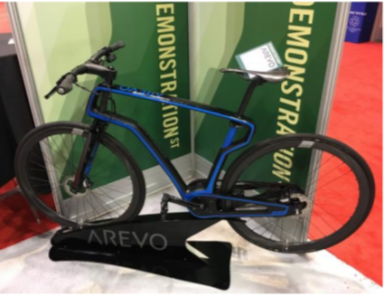It’s been five years that investments into companies that specialize in 3D printing of composites has been gaining momentum. With almost $250 million raised to date, companies like Markforged, Arevo, Impossible Objects, Fortify and Arris Composites, are a few examples of players that are transforming this niche market.
Dr Bryony Core and Dr Richard Collins have examined the key trends that draw attention on this market in a recent report:
- Metals might not always be sufficiently lightweight enough
Within the field of 3D printing, there is increasing emphasis on functionality as the industry shifts away from the stereotype of rapid prototyping, and materials are not exempt from such scrutiny. For instance, within the field of metal additive manufacturing, metals such as titanium with excellent tensile strength and low density are ideal for lightweighting applications, and as such demand for these materials is continually increasing.
- Most 3D Printing Systems cannot be print continuous carbon-fiber reinforced thermoplastic polymers
Carbon fibre reinforced thermoplastic polymers, aka CFRP, are already established materials where a high strength to weight ratio is key; the aerospace industry, automotive and transportation, and luxury sporting goods, have all leveraged CFRP for this specific property. Although 3D printing composites has been limited to date, this is to an extent a product of the inability of most additive manufacturing hardware systems to print continuous CFRP, as well as the propensity for increased nozzle wear.
- New entrants to the market challenge the 3D Printing composites market
Markforged is no longer the only dominating player of this niche market. Start-ups like the Italian Roboze is also shaking the market:
“Roboze technology is compatible with demands from aerospace, motorsport, energy, and automotive industries. Its FFF technology enables manufacturing under high temperature and can process high performance polymers such as PEEK and Ultem, as well as being compatible with their own Carbon PEEK, or chopped carbon fibre PEEK filament”, explained the authors.
- Professionals cannot ignore the benefits of 3D Printing composites
Chopped fibres tend to improve some of the material properties such as heat resistance, but the strength is largely determined by the matrix material, which is the thermoplastic. Markforged has developed software and hardware to specifically enable continuous fibre 3D printing, but it is now clear that, they aren’t alone in the market anymore. Anisoprint, a Skolkovo-based 3D printer manufacturer, are emerging as the first direct competitor to Markforged after they unveiled a new composite basalt fibre reinforced thermoplastic filament for use with their Anisoprint Composer. Having already developed their own continuous CFRP filament, Anisoprint turned their attention to basalt fibre. Basalt RFP is 15 times stronger than plastic, 5 times lighter than steel and 1.5 times stronger and lighter than aluminium. In addition, it is also radio transparent, making it ideal for non-conductive elements and insulators.
You can now post free of charge job opportunities in the AM Industry on 3D ADEPT Media.For further information about 3D Printing, follow us on our social networks and subscribe to our newsletter : Facebook, Twitter, LinkedIn & Instagram !Would you like to be featured in the next issue of our digital magazine? Send us an email at contact@3dadept.com






